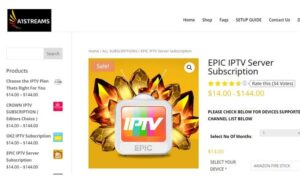Commercial buyers expertise technology services are locked right into a self-defeating pattern of behavior in relation to negotiating car loan terms and types of conditions with technology vendors, and is also a chance to proceed to a much better approach. Better technology vendor negotiations produce better contracts for just a technology project, and better contracts produce better project outcomes. So, break the mold and proceed to an easy method of negotiating car loan terms and conditions for your next technology project.
Vendor Contracts – Timing Is Everything
Why don’t we think that presently you’ve done many planning and knowledge gathering on your proposed technology project, you have completed a vendor selection process, now you should document your manage your best vendor.
Now while in the technology procurement process, the most frequent practice-indeed the almost-universal practice-is to distribute the vendor’s proposed contracts to your project team for review and comment. Then, that by instinct, everyone starts on the lookout for vendor bias during the contracts. Not a soul has become with all this specific directive. You simply assume and expect that anyone knows the drill. Folks on your project team begin striking certain biased provisions and scribbling notes about amending others. Without a doubt, removing or limiting vendor bias while in the contracts is usually a worthwhile exercise, however right now isn’t the time and energy to perform this exercise.
Lamp on
I’d to obtain several technology deals under my belt before I realized this, but around this early stage within the contracting process, you need to focus first on small print that are essential to you, not the small print which might be extremely important to your vendor. Could your vendor has used in its specimen contracts (as modified previous to presentation to you personally) most of the terms and conditions of this deal which are crucial that you your vendor. In truth, they are quite simple to find.
They are all anything terms with vendor bias. These provisions are extremely crucial to your vendor who’s has purposely added bias for them, often with obvious exaggeration and redundancy. Whether or not your vendor has got to bargain down somewhat readily available provisions, your vendor is still inside of a safe position given that the place to start was so extreme.
What you should do instead
At this initial stage of contracting, you’ll want to ignore your vendor’s proposed contracts. Simply set them aside in the mean time, and accomplish this for just two reasons.
First, to be able to express on paper the conditions and terms that happen to be most critical to your account, you will need to actually bring to mind what those conditions and terms is likely to be. Likeable when your vendor may be, your vendor won’t have already put into its proposed contracts the t’s and c’s biggest to your account to your particular project. You’ll have to think of these false claims all on your own.
Second, before you find out what t’s and c’s are most critical to your account for your particular project, movie no position to challenge your vendor’s biased provisions except in attempt to remove or limit the bias. “I have no idea of just what exactly impact this provision sports our project, but I know it’s actually not a provision which enables you to our cause.” Challenging these provisions in a very vacuum isn’t going to really help you.
The best picture
The time has come first a new, big-picture perspective, then add many detail. Circle time for earlier stages of your procurement process and revisit your decisions, your assumptions, and the various things you might have learned. On account of your many meetings and discussions, there will probably be stuff that you’re now taking as a right: special vendor qualifications, how the particular little bit of assembling your garden shed will be orchestrated, acutely risky aspects of assembling your garden shed, and so forth. Bring to mind other similar projects as part of your organization and apply what you may learned from those experiences.
Re-acquainting yourself with prior thoughts, discoveries, assumptions, and experiences will assist you to remember elements of the project that you just previously deemed important-whether considering they are critical to project success, they pose an important risk inside of your project, or sometimes both-and it will make you think about the need for elements initially. The process will allow you to build your t’s and c’s for your personal deal that benefit and protect you, conditions and terms that increase the probabilities of project success and minimize project risk.
As part of the process, create a detailed number of variety of small print which are very important for your distinct project, and:
1) Categorize them by theme.
For example, requirements development and prioritization, data mapping, business process issues, software development, application integration, content management, system integration, testing, implementation, buyer protections, vendor management tools, warranties, etc. When you get around to negotiating all of the items on the list using your vendor, any project team may have important reference points. “Does this contract item touch implementation? If you do, here are our implementation items.”
2) Add qualifiers for each item.
Among other things, qualifiers normally include a ranking of particular item’s relative importance in your project (necessary to project success, represents substantial risk, wish list, etc.). Once you get around to negotiating all the items on the list using your vendor, your project team are going to be less inclined to remedy all items for your list as incredibly important. Most likely, not all might be incredibly important. Your team has a feeling of how challenging push at a particular item, and terms of the give to get that is caused in a different negotiation process, they’ve got sense of what things to compromise (and also exactly how much) or concede outright if met by strong resistance from your vendor.
3) Add relevant notes and comments for each item.
Amongst other things, relevant notes to require in your list items include comments about accountability. Who within your project will be in charge of accomplishing the precise item: your vendor, your internal staff, or some combination? And what should happen should the party with accountability drops the ball?
Using this type of sort of list at your fingertips, you are in a a lot better position to review your vendor’s proposed contracts. Perhaps most critical, you happen to be do not reviewing the contracts in a very vacuum. You’re equipped to conduct a totally meaningful look at your vendor’s proposed contracts.
Is there a gap inside the vendor’s proposed contracts; which is, something through your list isn’t addressed in any way? Perhaps there is an inaccuracy during the vendor’s proposed contracts; that is certainly, a product or service is addressed, it’s present treatment would not match your understanding, preference or requirement? Are topics from the contracts miscategorized? Are interrelated items neglected so? Are accountabilities not clearly established?
A much better approach
Although damaging the mold and adopting the above way of technology vendor contracting will surely help you create better contracts for your technology project, which contracts should facilitate an even better project outcome, there’s a solution to help yourself a step forward.
In lieu of starting with and through your vendors’ proposed contracts for your next project, contemplate growing your own standard agreements to include with your technology procurement process (usually with the RFP stage).
First, build a neutral or somewhat buyer-favorable Software License Agreement. Discover a standard Software License Agreement and neutralize or remove the portions of vendor bias. Exercise . the buyer-side content that you will normally end up negotiating with a typical vendor (were you working within the vendor’s standard Software License Agreement). Next, choose a standard Consulting Services Agreement and do the exact same thing.
It’s fine to use your newly-developed standard agreements to your next technology RFP and request for that responding vendors either approve your standard agreements as-is, or cite alternative language for provisions they can’t find acceptable.
By incorporating your standard agreements into the technology procurement process, you can achieve two considerations. First, you’ll be able-probably for that first time-to evaluate vendor candidates in accordance with probably the most critical factors for project success, t’s and c’s. You are able to gauge a prospective vendors appetite for conditions which can be crucial to your for ones particular project BEFORE you have selected a vendor. It is much harder to win favorable small print Once you have selected the property owner on your project. And second, you may greatly reduce negotiation cycle times.
An increasing number of commercial it buyers-of all sizes-are with this approach. Perhaps it will surprise you to definitely learn that many reputable technology vendors won’t just entertain the chance of working in the standard agreements rather then theirs, they will often even welcome the possibility given that it saves them time and money too.



